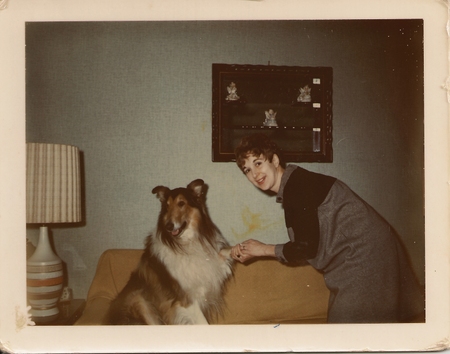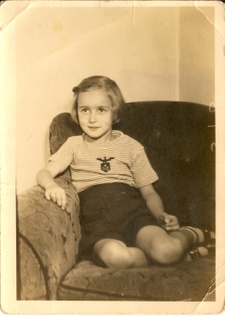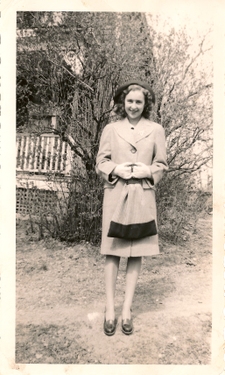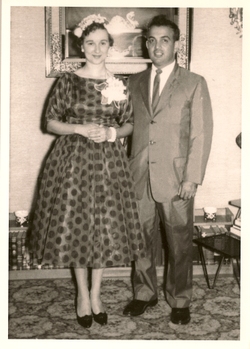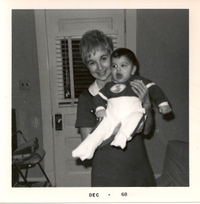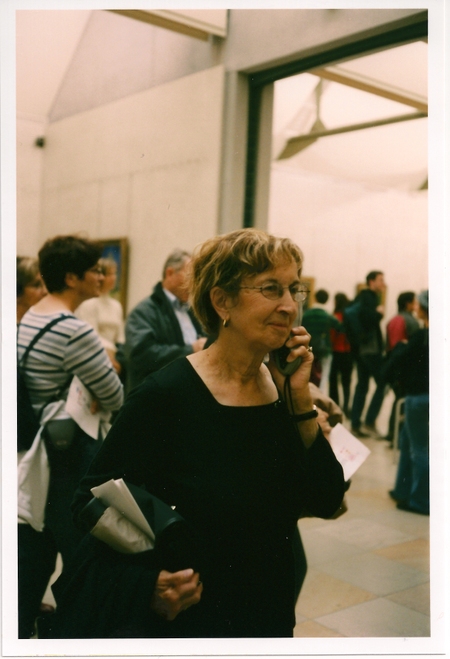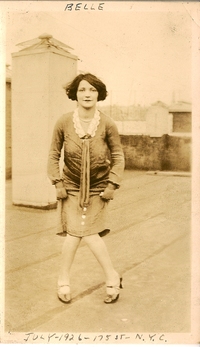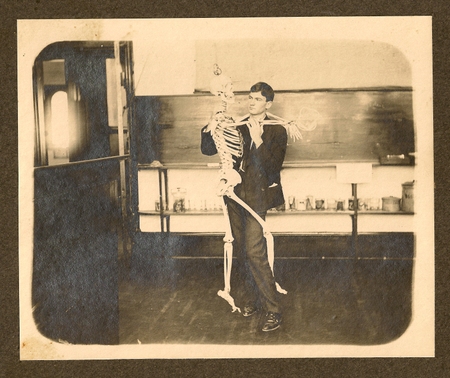I’m late coming to it, but Michael Kinsley wrote an essay in Time on April 10 about the psychic fallout of switching his identity from that of an editor, who longanimously pampers his writers, to that of a writer, who longanimously suffers under his editors. (Hat tip.) His essay reminds me of a great line in Muriel Spark’s novel Loitering with Intent: “I didn’t know then, as I know now, that the traditional paranoia of authors is as nothing compared to the inalienable schizophrenia of publishers.”
Barbara A. Terzian
Peter’s mother, Barbara A. Terzian, née Mendoza, died on Saturday, 19 April 2008, at age seventy-seven. She was born in 1930 in Troy, New York, and she married Peter’s father, Richard Terzian, in 1959. She worked as a case supervisor for the Rensselaer County Department of Public Welfare in the 1950s and 1960s. She was an avid reader, a devotee of the arts, a great fan of dogs, and an all-around generous, loving, accepting person. She is sorely missed.
There will be a wake at the Dufresne and Cavanaugh Funeral Home in Latham, New York, on Tuesday, April 22, from 5pm to 7pm, and a funeral mass at St. Ambrose Church on Wednesday, April 23, at 11am. If you’d like to make a donation in her name, please consider the Regional Food Bank of Northeastern New York.
Madness updated, or rather, backdated
Two years ago, I suggested that the first use of the phrase “mad—mad I tell you” was in 1879 but invited reply from discoverers of earlier usage. The brilliant and ever-resourceful Paul Collins has risen to the challenge, and has discovered the phrase in an 1855 novel, The Old Farm House by Caroline Hyde Butler Laing.
Notebook: “Move Closer, Please”
My review of “The Art of the American Snapshot, 1888–1978: From the Collection of Robert E. Jackson,” a photo exhibit with a catalog, is in the 1 May 2008 issue of New York Review of Books (online subscription required). Since the article does have footnotes, I don’t need to annotate my sources here, so I thought instead I would post a few snapshots from my own collection, and then throw in a few motley links.
The snaps of “Belle” (left), a child with a French bulldog (right), and an Edwardian picnic (below) are anonymous. I purchased them in Brooklyn sometime in the last half dozen years. I’m afraid I don’t remember where. I find it very calming to imagine attending a picnic with fruit and thermoses anchoring the tablecloth. In white tie, of course.
The medical student dancing with the skeleton (below) is my maternal grandfather. As you can see, a complicated man.
And this fellow (left) grew up to be my boyfriend. Note the placid, almost beatific smile. Contrast it with the eerie human eye just barely visible, in a shadowy way, inside the fake eye of the bunny creature. Note, too, the fluffy, imprisoning hands of the bunny creature.
Now, as to links. Snapshots—or, to call them by their fancy mass-noun, vernacular photography—are very well suited to the Internet. You can lose yourself for days looking through all the virtual shoeboxes. Luc Sante’s great blog, Pinakothek, often features found photos. Another blog, Swapatorium, has photos retrieved from flea markets and junk shops. A number of collectors have put their finds online, including Nicholas Osborn at Square America and John and Teenuh Foster at Accidental Mysteries. If you decide to start collecting yourself, there are images for sale at the Found Photo and at Project B.
A number of people have sent scans of their old photos to NYU’s Collective Visions, along with prose-poetical annotations (it doesn’t look as if it’s been updated recently, though). When the Getty ran a snapshot exhibit several years ago, they hosted a similar volunteer, communal snapshot gallery on their website. Polanoid pools the Polaroids made and collected by the dying company’s aficionados, though not all the images are snapshots. And then of course there’s Flickr. Almost every historical archive with images has some vernacular photography in it, but at the risk of seeming arbitrary I’ll single out the Charles Van Schaick collection in Wisconsin Historical Society, which has such treasures as this cake, and the Charles Weever Cushman photograph collection at Indiana University, the bequest of an amateur whose snaps sometimes call to mind the great color photos of the FSA/OWI held by the Library of Congress (which aren’t snapshots, properly speaking, at all).
My boyfriend is bicoastal
It turns out that my boyfriend, who, out of his concern that Googlers will be unable to find him, I shall identify here by his full name, Peter Terzian, also has a review in the Los Angeles Times today, of Dean Wareham’s memoir Black Postcards. He doesn’t like it as much as Liz Phair does.

